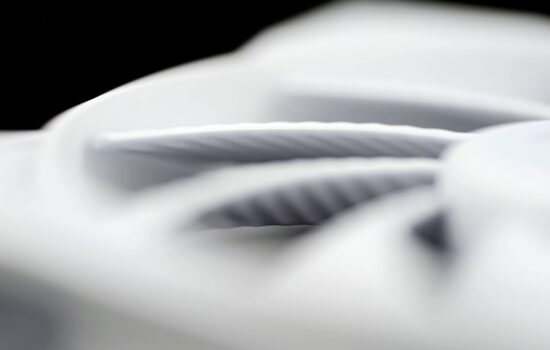2×9 blades on 160 mm MSI fans
Higher pressure from the location around the impeller hub. This will probably be addressed by more fan manufacturers in the coming period. Each will go about it in a slightly different way, and MSI also revealed its “strategy” for achieving more attractive results at Computex (24). With fans with one, two, three, … eighteen blades arranged in two rows. It will start to be sold in PC cases.
One of the many notable things at this year’s Computex were MSI’s fans with their above-standard blade count. And actually, not just the number, but also their arrangement. When you divide the outer cross-section into two parts, there are nine larger blades near the frame and nine smaller ones near the impeller hub.
A good reason why MSI has come up with this layout is that the smaller blades will result in higher airflow at the same speed compared to if they were “normal” blades. By those, we now mean a design that has smooth rounded edges. In such designs, the efficiency of the blades decreases towards the hub, thereby reducing the airflow. This can be increased either in this way or by more aggressively bending “one” blade, as is done for example by Noctua in the second generation of LCP fans.
For example, a similar blade design leading to the same purpose is also used by selected Sapphire graphics cards from around 2022 (of the models we have tested, these are RX 6650 XT Nitro+, RX 7600 XT Pulse, RX 7800 XT Nitro+ or RX 7900 XT Pulse). So it’s not an entirely new thing, but on standalone fans such a modification is rare. It is true that, for example, Zalman had impellers with double-row blades quite a long time ago (think of the ZM-DF12/14 models), but that was more of a rarity that was unrefined in many ways.
One thing is the higher airflow at the same speed and another is how much the noise level goes up at the same time. As long as the latter increases at a faster rate than the airflow, there’s not much to stand on. How it will be in the case of MSI, we’ll see. That is, as long as the fans shown at Computex will be sold in smaller formats (140/120 mm) than the 160-millimeter one. The latter will likely be the first to hit the market as part of the MPG Velox 300R Airflow PT (White) PC case accessories. I will probably be using this case in my tests, and already in those tests it may be possible to see how efficient this design can be.
Each of the rows of blades of these fans is reinforced with a hoop, as a result of which a reduction in vibration can be expected, as well as a higher pressure at the blade tips, from which (as in the case of impellers without hoops) the air streams are not torn off. On paper, these fans look quite good, especially considering the range of illuminated (ARGB) models, where the emphasis is often more on an impressive visual impact than on the best possible aerodynamic properties.
These fans could hit the shelves later this year (in the fourth quarter). But that’s within the Velox case. When and if they will be sold separately, we don’t know.
English translation and edit by Jozef Dudáš
- Contents
- 2×9 blades on 160 mm MSI fans














It seems we are witnessing the start of the trend of focusing on improving efficiency near the hub. I wonder if we’ll eventually see something like fans with outer/inner rotors moving at different speeds.
–“…I wonder if we’ll eventually see something like fans with outer/inner rotors moving at different speeds. “
That’s exactly the thought that crossed my mind…the inner faster spinning part and the outer slower spinning part, but…later I turned on the second brain cell as well (ie 100% of my usable capacity 😀 ).
I think, this approach would inevitably lead to more turbulence, ie noise.